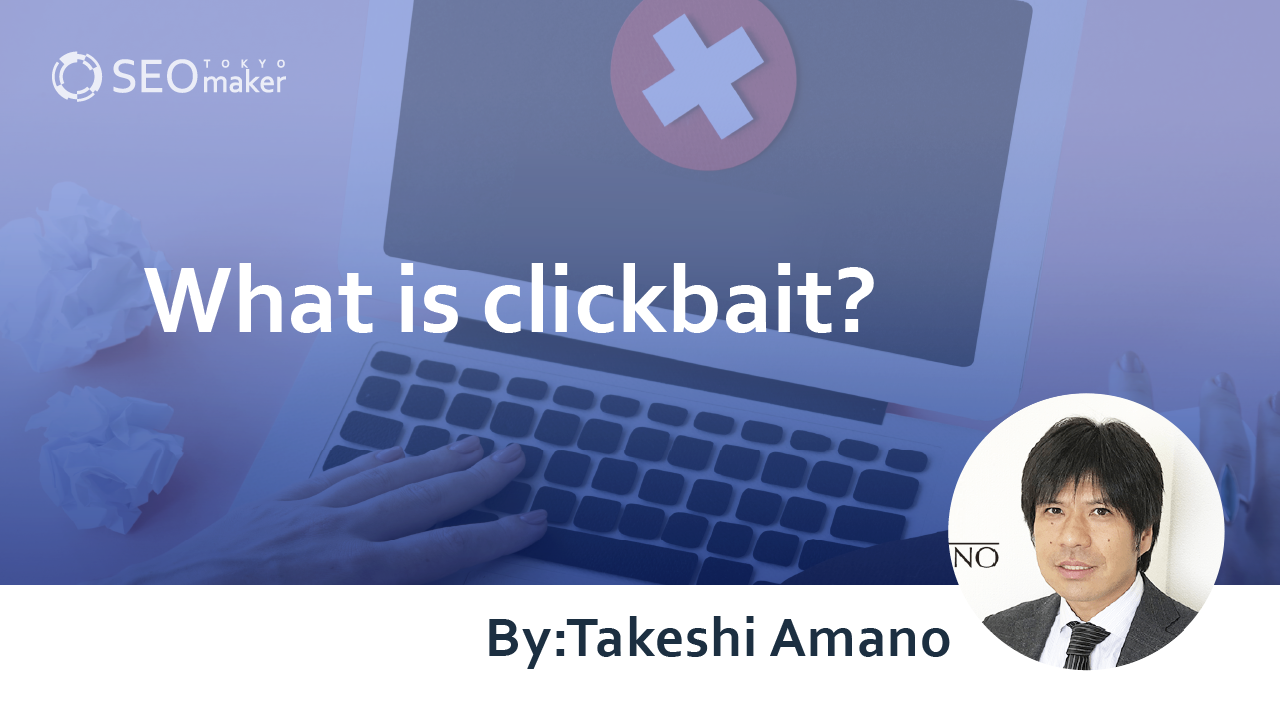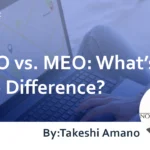What is clickbait? : Why It’s Considered a Problem?
contents

Clickbait refers to titles that are misleading or unrelated to the actual content. If you frequently browse blogs or YouTube, you have likely been drawn in by an appealing title only to find the content entirely different, leading to disappointment.
While merely collecting page views might seem harmless, accepting and spreading misinformation through clickbait can harm readers and expose the sharer to criticism.
To avoid such situations, it is essential to learn how to distinguish between clickbait and genuine content.
This article will provide a detailed explanation of clickbait, why it is problematic, and its synonyms.
What is Clickbait?
Clickbait is primarily used on the internet.
The term comes from combining “click,” referring to pressing a mouse button, with “bait,” which means lure or temptation. Thus, clickbait involves using sensational titles or thumbnails as bait to induce clicks.
Since clickbait has become one of the issues in the internet society, and as the internet has become a part of daily life, the ability to recognize clickbait is now considered important.
Content that uses clickbait is often of poor quality
Content with clickbait titles generally contains misleading information. High-quality content that everyone wants to see does not need clickbait because it can attract views without such tactics.
Conversely, poor-quality content cannot gather page views without using clickbait. Therefore, it can be said that content that relies on clickbait is inevitably of poor quality.
However, some companies adopt clickbait as part of their business strategy, so it is necessary to have the ability to discern.
Examples of clickbait
For instance, consider an article titled “Can Website Creation Earn You a Million? Revealing the Know-How!” Those interested in making money through website creation would likely click on the title to read the content.
However, upon reading, they might find that the article is actually a promotion for an engineering school filled with unnatural affiliate links, without any real tips on website creation.
The content creator used clickbait to attract readers for profit through affiliate marketing.
This is an example of clickbait, where the title mentions something not discussed in the content to pique the reader’s interest.
Examples of content where clickbait is used
Clickbait is employed in various types of content. Among these, the frequently used contents are as follows.
- Blogs
- Columns
- Videos
- News articles
Many people have incorporated the aforementioned content into their lives. For those involved in creating or consuming content, it is crucial to be cautious.
Types of Clickbait
Clickbait can be categorized as follows.
- Misleading
- Imagery-based
- Exaggeration
Misleading
Misleading clickbait involves using phrasing in the title that causes readers to misunderstand and click on it.
For example, a title like “Get a House for Just $50” might lead you to click, only to find the article is actually about a model house being sold for $50. This type uses readers’ misconceptions and associations to provoke clicks.
Imagery-based
Imagery-based clickbait uses misleading images to encourage clicks.
For instance, if an article features a picture of a male and female celebrity together with a title that hints at “Marriage…” only to reveal that the content discusses their individual thoughts on marriage, not that they are getting married to each other. The goal here is to lure clicks from people who mistakenly think the celebrities are marrying each other.
Exaggeration
Exaggeration involves overstating the content in the title.
For example, a title such as “Lose 10 kg Just by Taking This Supplement” might suggest effortless weight loss, but the actual product requires combining the supplement with exercise to achieve results. This is an example of exaggeration.
Avoiding Clickbait
Clickbait can severely damage trust with users, so it must be avoided. However, those new to creating titles might inadvertently produce clickbait.
To ensure your titles do not become clickbait, keep the following two points in mind
- Align the title with the content
- Include the conclusion
Align the title with the content
To avoid clickbait, make sure your title accurately reflects the content. Users click on a title based on its appeal or utility.
If the title does not match the content, it can lead to user dissatisfaction and unintentionally become clickbait. Therefore, aligning the title with the content ensures it is not clickbait.
Include the Conclusion
Users view content to resolve questions or concerns. Some content that uses clickbait aims to prolong user engagement without ever addressing the conclusion.
By including the conclusion in the title, you can avoid discrepancies between the title and the content, and prevent it from becoming clickbait.
Social Networks and Websites Taking Measures against Clickbait
Clickbait is one reason for decreasing reader satisfaction and, as long as it exists, internet safety cannot be guaranteed.
Therefore, some social media companies have been developing strategies against it for years.
SNS, Service name / Strategies
- Facebook: Implements systems to remove posts and sites using clickbait from timelines.
- Twitter: Introduces filters to posts using clickbait.
- Gunosy: Implements a system to automatically deemphasize clickbait within the app.
Especially on social networks, where “likes” can directly impact profits, clickbait is frequently circulated.
Social media companies are proactive in eradicating clickbait, but users also need to be cautious.
Why Clickbait Is Problematic
Clickbait is highly criticized for the following reasons.
- Misleads readers.
- Fails to meet readers’ needs.
Despite being problematic, not many people fully understand why clickbait is so concerning.
In this internet-driven society, not understanding the issues with clickbait may inadvertently lead to its malicious use.
Misleading Readers
Clickbait is criticized because it misleads readers. The titles and thumbnails used in clickbait may not be completely different from the actual content.
However, they are often misleading enough that readers are drawn in by sensational titles and end up believing the poor-quality content.
This situation leads to several problems.
-Spread of Incorrect Information
– Blame on the Sharer
Misled readers may spread incorrect information through social networks or blogs.
In the internet age, even false information can spread globally. While spreading accurate information can bring praise, spreading falsehoods leads to criticism.
Fails to Meet Readers’ Needs
Content that utilizes clickbait fails to meet the needs of the readers.
Clickbait attracts page views by sensationalizing titles and thumbnails. Thus, even if the content is shallow, sensational titles and thumbnails will still entice clicks.
From the reader’s perspective, people typically seek information to resolve personal doubts or problems.
Those who trust clickbait titles and thumbnails and find the content irrelevant can be greatly disappointed.
Thus, content that relies on clickbait does not satisfy the needs of the readers.
The Difference Between Fake News and Clickbait
When people hear the term “clickbait,” they might think it is synonymous with fake news, but they are different.
What is Fake News?
Fake news refers to entirely fabricated news based on non-factual information.
It can also refer to uncertain information disseminated by mass media, but it’s crucial to note that this differs from clickbait.
Fake news is created for various reasons
- To sow confusion among readers.
- To undermine the reputation or status of specific individuals.
- For the amusement of the creator.
Confidence in Identifying Fake News
To ensure the intake of accurate information, it is essential to distinguish between fake news and real news.
Regarding confidence in identifying fake news, about 40% of people feel unsure. Across all age groups, those who are “not confident” outnumber those who are “confident.”
Source: Ministry of Internal Affairs and Communications on the prevalence of rumors and fake news in the digital age
Frequency of Encountering Fake News
The frequency of encountering fake news on social media and other platforms is as follows:
About 30% of people report seeing fake news at least once a week on platforms like social media and blogs.
Source: Ministry of Internal Affairs and Communications on the prevalence of rumors and fake news in the digital age
Genres of Fake News
The Reality of Fake News in Japan
Source: Research on the Reality of Fake News in Japan by Mizuho Information & Research Institute, Inc.
The distribution of fake news genres that people have encountered is as follows
- Sports, Entertainment, and Culture
- Society and Incidents
- Lifestyle and Health
- Disasters
The highest percentage, at 43%, relates to Sports, Entertainment, and Culture, while the lowest, at 13.9%, pertains to Economics.
What is Clickbait?
Though clickbait may seem similar to fake news, they are distinct. As previously, explained, fake news comprises entirely fabricated information that differs from the facts. In contrast, clickbait does not necessarily present false information but leads to content that does not meet the expectations set by its headline.
Therefore, considering these two terms synonymous could lead to misunderstandings, so caution is advised.
Synonyms for Clickbait
While fake news is not a synonym, clickbait has several equivalent terms
- Bait headlines
- Misleading titles
- Title and thumbnail fraud
- Teaser advertising
Bait Titles
A bait title uses enticing words to draw readers in.
For example, a headline that reads “Buy Apple for 100 yen” that leads to an article about apples (the fruit) available for 100 yen is a bait title.
The goal is to gather page views, so it is different from phishing scams that involve selling products or deceitfully taking money.
Misleading Titles
Misleading titles incorporate words that can be interpreted in multiple ways to attract the reader’s interest. Often, these aim to stimulate sexual curiosity. The titles are not technically lies, so they are not legally punishable.
An example is a headline like “Actress + Kiss,” where the article actually discusses an actress preparing a kiss fish, which is a play on words.
Title and Thumbnail Fraud
Title and thumbnail fraud involves using a more attractive title or thumbnail than the content warrants to draw in readers. This tactic is increasingly visible on platforms like YouTube.
Since this approach can lead to viewer dissatisfaction, it is not uncommon for content creators to face backlash or “flame wars” online.
Teaser advertising reveals only part of the product information to spark consumer interest. Originating from the word “tease,” the goal is to tantalize consumers and build anticipation. Consumers, intrigued by the partial information seen in the ad, are compelled to click for more.
- Top of Form
Teaser Advertising is Often Used for Artists and Anime.
However, teasing too much can lead to consumer dissatisfaction, which is not uncommon. Especially nowadays, as teaser ads are frequently seen, careful consideration is needed when using them.
Disadvantages of Using Clickbait
The drawbacks of using clickbait are as follows.
- Loss of trust from readers
- Damage to branding
Loss of Trust from Readers
Clickbait leads to a decline in trust as the titles and thumbnails often do not match the content or fail to resolve readers’ issues or questions. Some might accept losing trust as a trade-off for business, but in most cases, business thrives on trust.
Using clickbait for short-term gains does not lead to long-term benefits. If you want to maintain trust from your readers, it is best to avoid using clickbait.
Damage to Branding
Companies use various strategies to establish their brand. Using clickbait can damage the brand you have built and may be irreparable. If increasing sales is the goal, it is crucial to use methods other than clickbait.
Summary
As an advanced SEO consultant, it is clear that clickbait is problematic on the internet because it can mislead readers and fail to meet their needs. The difference between clickbait and fake news lies in the truthfulness of the content. Fake news is completely fabricated, whereas clickbait is not necessarily outright false. With the widespread use of the internet and social media, clickbait lurks in many places, so constant vigilance is essential.










![What is a Description? Explaining the Meaning, Writing Style, and Changing Word Count – [2023 Edition]](https://www.switchitmaker2.com/en/wp-content/uploads/2024/09/what-is-description.webp)










